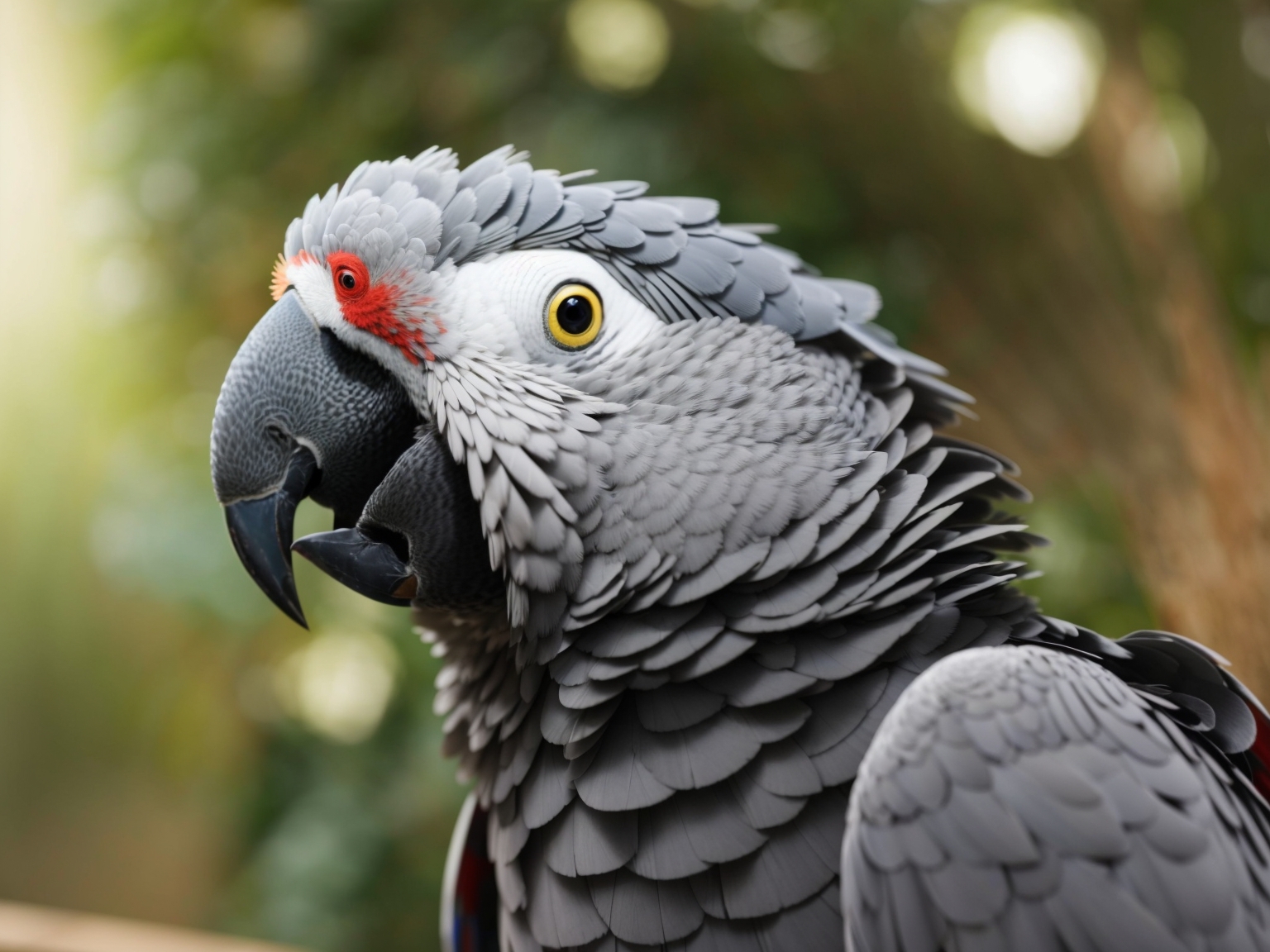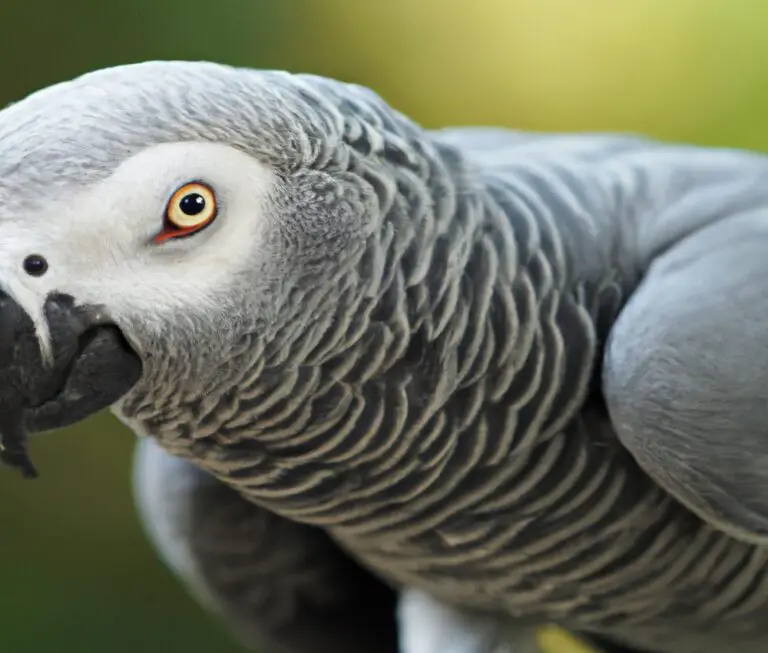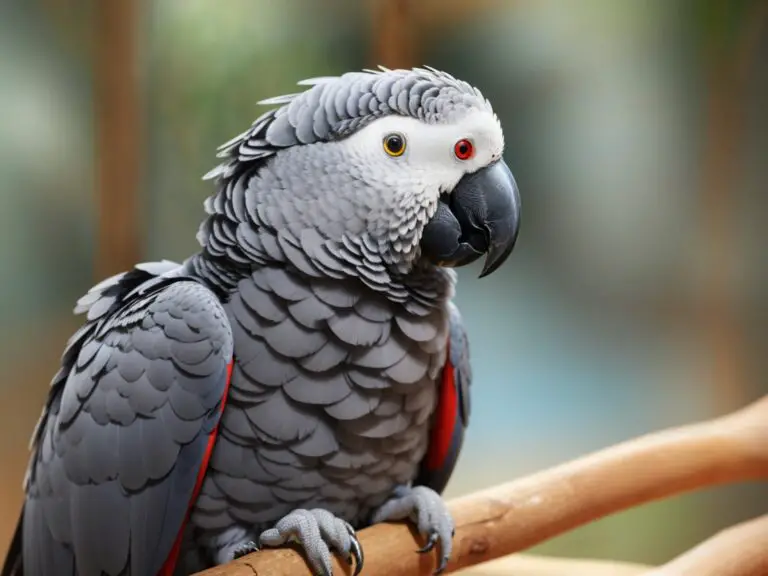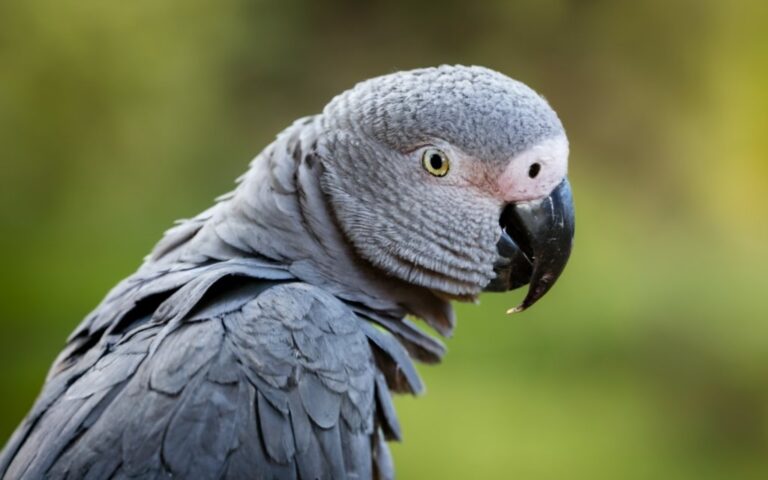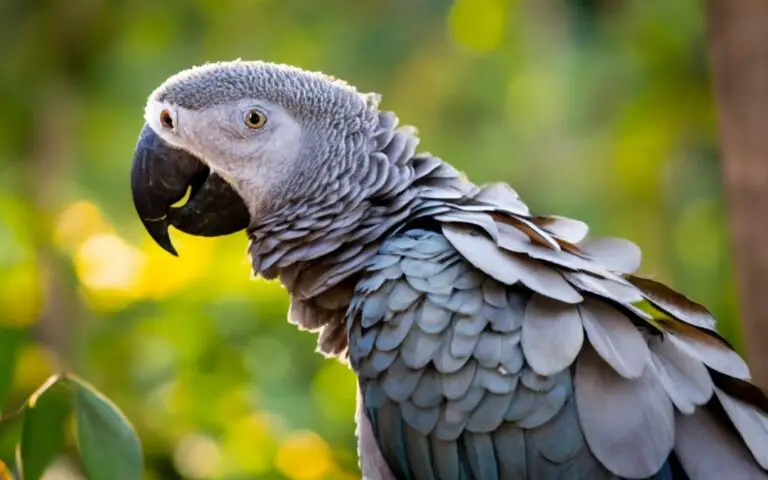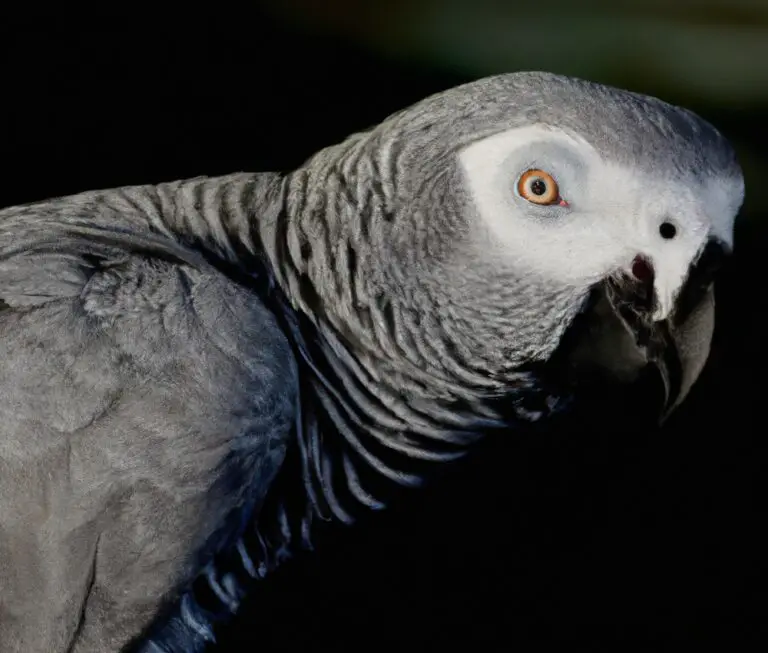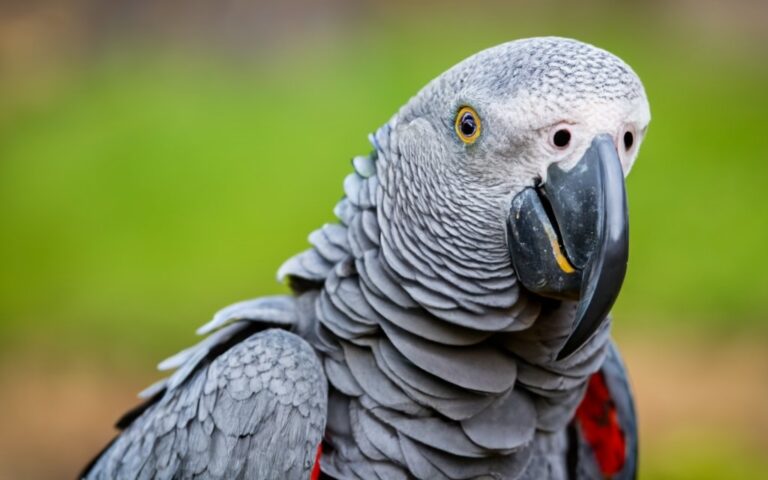How Do African Grey Parrots Find Food Sources In Their Habitat?
Key Takeaways:
- African Grey Parrots have advanced foraging abilities and use their intelligence to locate food sources in their natural habitat.
- These parrots rely on visual and auditory cues to locate food, such as recognizing food-rich areas or listening for the sounds of other feeding animals.
- African Grey Parrots also demonstrate problem-solving skills and can manipulate objects to access food sources that are otherwise hard to reach.
- The ability to find food sources is crucial for these parrots’ survival and their sophisticated foraging strategies contribute to their adaptability in various environments.
Imagine soaring through the dense rainforests of Africa, with a keen eye for the next meal. African Grey Parrots are masters of survival, and their ability to find food sources in their habitat is nothing short of remarkable.
But how exactly do these intelligent birds navigate their way to sustenance?
In this article, we will explore the foraging strategies of African Grey Parrots, their amazing adaptations for finding food, and the challenges they face in a changing landscape. Get ready to delve into the fascinating world of these feathered foragers and discover the secrets behind their survival.
| Food Source | Method |
| Seeds, fruits, nuts | Search and forage |
| Insects, grubs | Inspect tree bark and leaves |
| Small animals, reptiles | Hunt/prey on |
| Vegetation, plant matter | Nibble on leaves, flowers or stems |
| Water sources (rivers, streams) | Travel to nearby water sources |
African Grey Parrots: Habitat and Diet
African Grey Parrots thrive in tropical rainforests and savannas.
They predominantly feed on fruits, nuts, seeds, and vegetation.
African Grey Parrot Habitat
The African Grey Parrot is native to the dense forests and woodlands of Central and West Africa.
These birds are highly adaptable and can be found in a variety of habitats, including rainforests, savannas, and mangroves.
They prefer areas with plentiful food sources and nesting sites, such as areas near rivers or fruit-bearing trees.
The availability of suitable roosting and nesting sites is crucial for their survival.
African Grey Parrots are highly intelligent and social birds, and they thrive in areas with a rich and diverse ecosystem.
They are excellent fliers and have the ability to cover large distances in search of food and suitable habitats.
African Grey Parrot Diet
The diet of African Grey Parrots consists mainly of fruits, seeds, nuts, and plant matter in the wild. They also eat insects and small animals for protein.
In captivity, their diet should include a variety of fresh fruits, vegetables, nuts, and a high-quality pellet-based diet.
It’s important to provide a balanced and nutritious diet to ensure their overall health and well-being.
Foraging Strategies of African Grey Parrots
African Grey Parrots have specific strategies for finding food in their habitat.
These strategies include adaptations, observational learning, and tool use.
Adaptations for Finding Food
African Grey Parrots have several adaptations for finding food in their habitat. They have strong beaks that help them crack open nuts and seeds.
Their powerful claws allow them to climb trees and manipulate objects.
They also have keen eyesight and hearing, which help them locate food sources from a distance. African Grey Parrots are highly intelligent and can learn from observing other birds.
They can even use tools to extract food from hard-to-reach places.
These adaptations enable them to explore and exploit a variety of food sources in their environment.
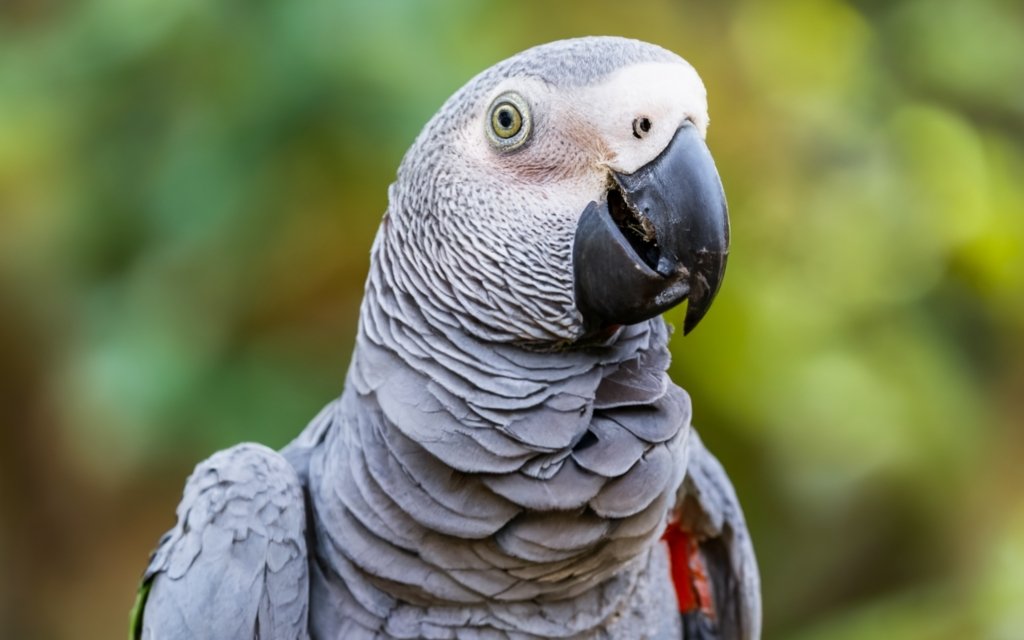
Observational Learning in Foraging
Observational learning plays a significant role in the foraging strategies of African Grey Parrots. These intelligent birds observe and learn from others in their group, picking up valuable information about food sources and feeding techniques.
By watching their peers, they can quickly adapt to new environments and find food more efficiently.
This learning process allows African Grey Parrots to expand their foraging repertoire and thrive in their natural habitat.
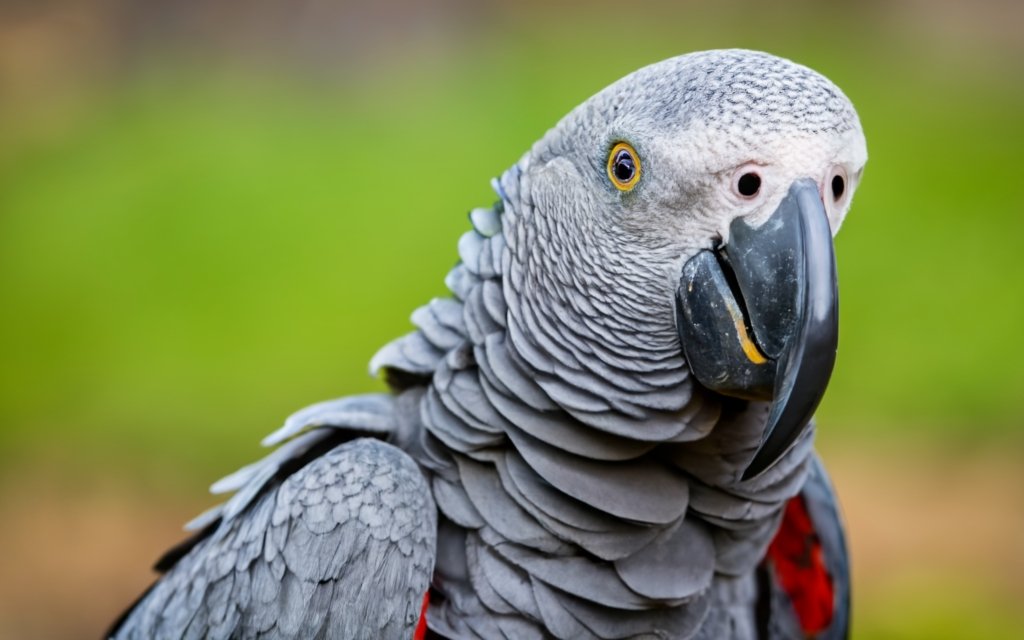
Tool Use in Foraging
African Grey Parrots have demonstrated remarkable tool use in foraging. They are known to use tools like twigs, sticks, and even their own beaks to manipulate objects and extract food.
For example, they have been observed using sticks to probe into tree bark to uncover insects or fruit.
This demonstrates their problem-solving abilities and adaptability in finding food sources. Additionally, African Grey Parrots have the ability to mimic the tool use behavior they observe in other parrots, showing their capacity for observational learning in foraging.
Overall, tool use is a crucial aspect of their foraging strategy and highlights their intelligence and resourcefulness in obtaining food.
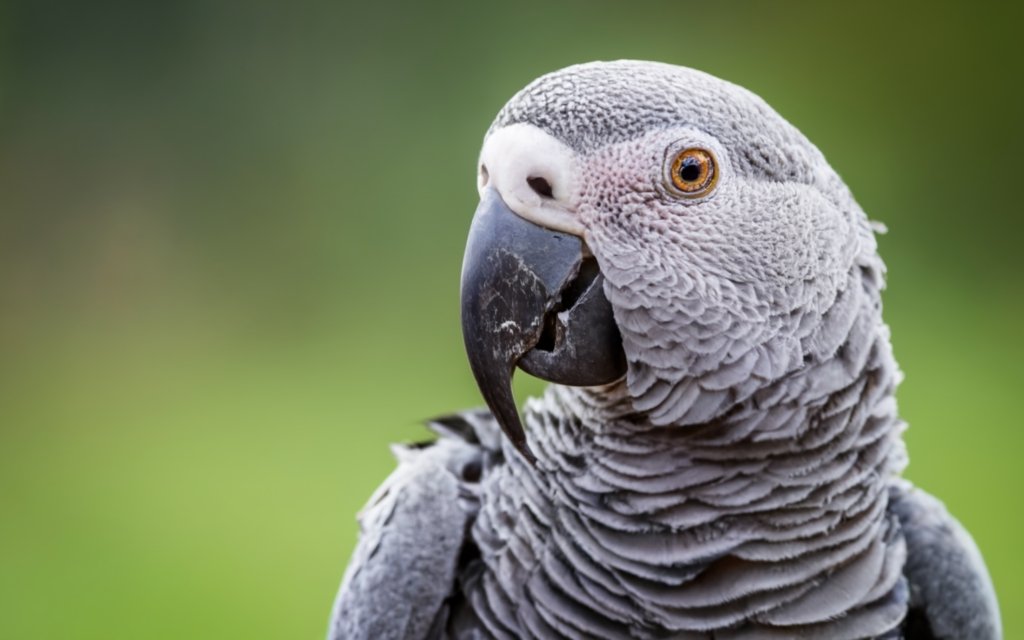
Food Sources for African Grey Parrots
African Grey Parrots rely on a variety of food sources for their nourishment and survival.
These sources include wild food, fruits and seeds, nuts, bark, plant matter, insects, and small animals.
Wild Food Sources
African Grey Parrots find a variety of wild food sources in their habitat.
They primarily feed on fruits, seeds, nuts, bark, and plant matter.
They also eat insects and small animals.
This diverse diet allows them to obtain the necessary nutrients for their survival.

Fruits and Seeds
Fruits and seeds are an important part of the African Grey Parrot’s diet. In the wild, these parrots forage for a variety of fruits and seeds from trees and plants.
They have strong beaks that are designed to crack open seeds and extract the nutritious contents.
Fruits, such as berries and figs, provide a source of hydration and vitamins. Seeds, like sunflower and pumpkin seeds, are rich in essential fats and proteins.
Overall, the availability of fruits and seeds in their habitat plays a crucial role in the survival and well-being of African Grey Parrots.
Nuts, Bark, and Plant Matter
Nuts, bark, and plant matter are important food sources for African Grey Parrots. Nuts provide essential fats and proteins, while bark contains minerals and fibers.
Plant matter, such as leaves and flowers, offer vitamins and nutrients.
These food sources play a crucial role in the parrots’ diet and help them maintain a balanced nutrition.
Insects and Small Animals
African Grey Parrots have a diverse diet that includes insects and small animals.
They use their strong beaks to break open insect nests and extract larvae.
They also hunt for small reptiles, amphibians, and rodents.
This variety provides essential nutrients and helps satisfy their natural foraging instincts.
Challenges and Threats to Food Sources
African Grey Parrots face challenges and threats in finding food sources.
Deforestation and Habitat Loss
Deforestation and habitat loss are major threats to African Grey Parrots’ food sources.
The clearing of forests for agriculture and logging destroys their natural habitat and disrupts their foraging patterns.
Without access to their preferred food sources, the parrots face food scarcity and hunger.
Additionally, habitat loss can lead to increased competition with other species for limited resources.
These challenges highlight the urgent need for conservation efforts to protect the parrots’ habitats and ensure their survival.
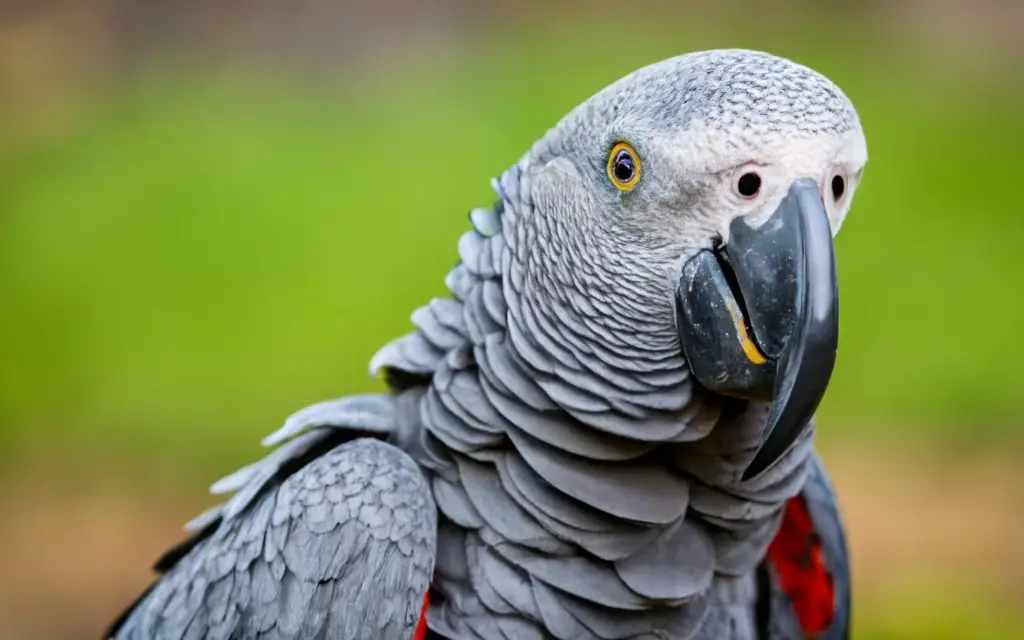
Climate Change and Disrupted Food Cycles
Climate change has a significant impact on food cycles, including those of African Grey Parrots.
Rising temperatures, changing rainfall patterns, and extreme weather events disrupt the availability and distribution of food sources.
This can lead to scarcity, making it harder for parrots to find enough food to survive.
Additionally, climate change can alter the timing of resource availability, mismatching the foraging behaviors of the birds and causing further challenges in obtaining food.
These disruptions can have serious consequences for the population and conservation of African Grey Parrots.
Competition with Other Species
Competition with other species is a significant challenge for African Grey Parrots when it comes to finding food sources.
They often have to compete with other bird species, such as macaws and cockatoos, for limited resources.
This competition can be intense, especially during times of scarcity.
African Grey Parrots have to be resourceful and may have to travel long distances to find food that is not being utilized by other species.
Additionally, they may have to adapt their foraging strategies to avoid direct competition, such as focusing on different food sources or foraging at different times of the day.
Conservation Efforts for African Grey Parrots
To protect African Grey Parrots, conservation efforts focus on protected areas, reforestation, and sustainable harvesting practices.
Protected Areas and Wildlife Reserves
Protected areas and wildlife reserves play a vital role in conserving African Grey Parrots and their habitats. These areas are designated and managed specifically for the protection and preservation of biodiversity.
They provide a safe haven for the parrots, allowing them to forage for food, find suitable nesting sites, and engage in other important behaviors without interference or disturbance.
Protected areas and wildlife reserves help to safeguard the natural resources and ecosystems that African Grey Parrots rely on, ensuring their long-term survival. By establishing and maintaining these protected areas, we can help protect the food sources and overall habitat of African Grey Parrots for generations to come.
Reforestation and Habitat Restoration
Reforestation and habitat restoration play a crucial role in supporting the survival of African Grey Parrots. By planting trees and restoring damaged habitats, we can provide the parrots with the food sources they need.
This effort also helps to maintain biodiversity and protect the overall ecosystem.
It’s important to prioritize these conservation practices to ensure the long-term well-being of the African Grey Parrot population.
Sustainable Harvesting Practices
Sustainable harvesting practices are crucial for the conservation of African Grey Parrots.
This involves carefully managing the collection of wild birds and their eggs to ensure long-term viability of the species.
It is important to establish quotas, enforce regulations, and promote community participation in sustainable harvesting.
Additionally, raising awareness about the importance of sustainable practices among local communities and stakeholders is key to the success of conservation efforts.
Frequently Asked Questions about African Grey Parrot Foraging
How do African Grey Parrots locate food in the wild?
African Grey Parrots locate food in the wild through their keen observation skills and intelligence.
They closely watch their surroundings, paying attention to the behaviors of other birds and animals.
They use their excellent eyesight to spot fruits, seeds, nuts, and other edible items.
These parrots are also known to follow the calls of other birds to locate food sources.
Additionally, African Grey Parrots have been observed using tools to obtain food, such as using sticks to extract insects from tree crevices.
Their ability to adapt and learn helps them find food in their natural habitat.
What do African Grey Parrots eat in captivity?
African Grey Parrots eat a varied diet in captivity to ensure they receive the necessary nutrients. They consume a mix of high-quality pellets, fresh fruits, vegetables, and occasional cooked grains.
It’s important to provide a balanced diet and avoid feeding them harmful foods like chocolate, avocado, caffeine, and alcohol.
Fresh water should be available at all times. Additionally, offering foraging opportunities and providing different textures can stimulate their natural feeding behaviors.
How do African Grey Parrots communicate about food sources?
African Grey Parrots communicate about food sources through vocalizations and body language.
They use different calls and sounds to alert others about the location of food.
They also use specific movements and gestures to convey information about the availability of food.
By using these communication methods, they can coordinate group foraging and share information about the best food sources.
How do African Grey Parrots store food for later use?
African Grey Parrots store food for later use by hiding it in various locations within their habitat.
They have excellent memory and can recall these hidden food sources when needed.
Additionally, they may also use their beaks or feet to manipulate objects or open nuts and seeds, storing the remaining portions for later consumption.
Final Verdict
African Grey Parrots have developed remarkable foraging strategies to locate and acquire food in their habitats. They employ adaptations such as keen observational learning and tool use to navigate their environments and access various food sources.
These intelligent birds rely on a diverse range of foods, including fruits, seeds, nuts, insects, and small animals.
However, they face numerous challenges and threats to their food sources, including deforestation, climate change, and competition with other species. Conservation efforts focused on protected areas, habitat restoration, and sustainable harvesting practices are crucial for ensuring the future survival of these incredible parrots.

